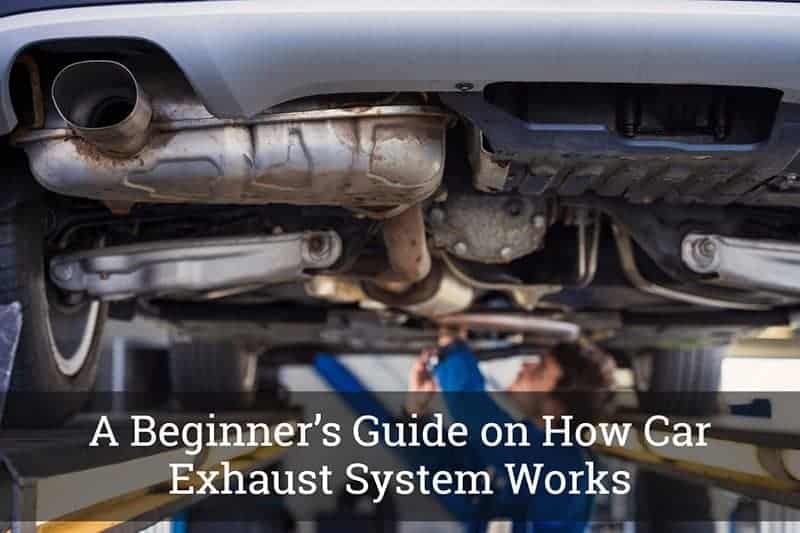For most of us, a car is considered an extension of our lives. We will not be able to carry out our day-to-day functions without it. From going to work to running errands, it provides a convenient mode of transportation. Because of this, it is important to make sure that the car remains in its best condition. To do so, you have to rely on the help of a mechanic.
A mechanic can come in handy in a number of situations, from diagnosing a specific problem to having it resolved the best way possible. Nonetheless, a mechanic may not tell you everything. Here are the 10 secrets your mechanic doesn’t want you to know.
- The mechanic might be using scare tactics.
- The mechanic might not be certified.
- Asking questions can help you.
- Not to sign a blank authorization form.
- The mechanic should have a scan tool and engine analyzer.
- Synthetic Oil is more expensive
- Don’t tell the mechanic you are asking for a second opinion.
- Services that you do not need.
- Free Lifetime muffler replacement.
- Ask for the build date of the tire.
1. The Use of Scare Tactics
Have you ever brought your car to a mechanic, and have you been told that you can no longer drive it even for a single mile? Has your mechanic acted like he was concerned about your safety only to push you to have your car immediately repaired? Chances are, the mechanic is using scare tactics.
Mechanics earn from doing repairs on your vehicle. Therefore, they might resort to scare tactics just so that you will be forced to leave your car and allow them to execute the repair job. Do not be afraid to ask for a second opinion from another mechanic in your neighborhood.
2. The Mechanic Might Not be Certified
Being a mechanic is a job that can generate a steady stream of income, which is why a lot of people tend to do it without the necessary qualifications. Some mechanics may not be licensed to do their jobs, but they will try to hide it from you just so that they can earn more money.
Make sure that the mechanic has a National Institute for Automotive Association Service Excellence Certification or American Automobile Association Certification. See to it as well that the mechanic has the license to operate to be confident that the person has the required skills.
3. Ask Questions

Ask, ask, ask – this is what you should do when you are in front of a mechanic. The mechanic may try to keep secrets from you, but if you know how to ask the right questions, no secrets will be left unrevealed. Show the mechanic that you know the things that you are talking about.
Before deciding to work with the mechanic, ask a couple of questions, such as how long they have been doing their job and an estimate of the costs that are involved. Their response to your questions will also help you to determine if you are working with the right person.
4. Do Not Sign a Blank Authorization Form
This may sound stupid, but there are actually people who would sign a blank authorization form. Once your signature is affixed, this means that you are giving them the authority to do anything they want and charge you ridiculous prices.
The authorization form must clearly specify the problem with your car and the repair job that will be needed. This will also show the price of the job. This is a binding document, so be sure to review it carefully before you have it signed.
5. The Mechanic Should have a Scan Tool and Engine Analyzer.
Even if the mechanic is trained for the job, he most probably cannot tell a lot of problems with just a look at the engine. If the mechanic is able to tell the problem without using any tool, do not trust the findings. Chances are, these are inaccurate.
The mechanic must invest in a scan tool and engine analyzer. The latter are handy tools that can be used to determine a problem easily. If they say that they do not need these special tools to repair their car, this is a sign that you should leave and find another person to carry out the job.
6. Synthetic Oil is More Expensive

If you are going to a mechanic for an oil change, chances are, you will be told that synthetic oil is the better choice for your car. Yes, it is true, especially because it has improved mileage. Nonetheless, what the mechanic may not tell you is that synthetic oil is costly.
Before the oil change, do not hesitate to ask about the price that you have to pay. As much as possible, ask it to be put in writing. If the mechanic suggests using synthetic oil, you must already know that it is going to cost you more.
7. Don’t Tell the Mechanic you are Asking for a Second Opinion.
If you suspect that the mechanic is not being honest with you, do not hesitate to drive away and go to another mechanic. This is common for people who cannot believe the outrageous prices that the mechanic is charging.
When you drive to the second mechanic, however, do not tell him that you are there for a second opinion. Rather, pretend that you have not yet asked around. More importantly, do not tell the new mechanic the first price that you have been quoted.
8. Services that you Do Not Need
Mechanics might do what it takes to milk money out of you. They might suggest different services that are actually unnecessary. They will make it appear that the job is urgent when in fact, it does not have a significant effect on the performance of the vehicle.
Among others, coolant and power steering flushes are two of the services that they might recommend. The truth is your car can run up to 100,000 miles without the need to undergo these services. They only want to earn more, which is why they are recommending these things even if they are not needed.
9. Free Lifetime Muffler Replacement

The muffler is one part of the car that you might need to change, especially when you plan to have an upgrade. When you approach a mechanic, you might be tempted to say yes when you are offered a free lifetime replacement of the muffler.
If you say yes, you will end up paying more. This is one of the dirty tactics that they execute to make more money from you. In the end, you will still be paying a lot for pipe repairs, and you will not actually be able to save money.
10. Ask for the Build Date of the Tire
If you are at the mechanic for a tire replacement, do not forget to ask for its build date. Of the ten secrets that we have mentioned in this post, this is perhaps the most common. When you see the new and covered tires, you might think that it is in good condition, when in fact, it is not.
Tires that have been in the storage room for more than three years can have thinner treads and can be unsafe to be driven, especially in the snow. Do not forget to ask about the build date of the tire to be assured of its reliability and safety.
Conclusion
This post has briefly tackled the 10 secrets your mechanic doesn’t want you to know. The next time you bring your car to a mechanic, keep these things in mind, and you will never be fooled by anyone.















